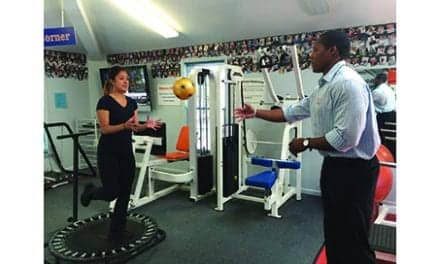![Pictured here is an implanted titanium rod used in the alternative limb-lengthening procedure. (Photo courtesy of Loyola University Medical Center]](https://rehabpub.com/wp-content/uploads/2015/08/LimbLengthen-300x175.jpg)
Pictured here is an implanted titanium rod used in the alternative limb-lengthening procedure. (Photo courtesy of Loyola University Medical Center]
A recent study examining an alternative limb-lengthening technique suggests that it can help make the long recovery process less cumbersome while reportedly still providing positive outcomes.
The study was published recently in the journal Clinical Orthopaedics and Related Research, according to a news release from Loyola University Health System.
The standard limb-lengthening technique is performed on patients with severe fractures and reportedly can prevent the need for amputations, the release notes.
Per the release, the technique requires patients to be fitted with a device called a circular external fixator. The device consists of a rigid frame made of stainless steel and high-grade aluminum. Three rings surround the lower leg and are secured to the bone in order to manipulate bone fragments with stainless-steel pins.
The release explains that limb lengthening works on a principle known as distraction osteogenesis. Four times a day, the external fixator pulls apart two bone segments, and new bone tissue fills in the gap. As a result, the bone lengthens at a rate of about 1 mm per day. Bones can be lengthened by between 15% and 25% of their original length at a time.
Once the new bone tissue is formed, it takes several more months until it fully regenerates.
In the standard limb-lengthening technique, the patient wears the external fixator until the bone completely matures, in order to support the weight of the limb. In the alternative technique, the surgeon implants a titanium rod inside the bone, in order to reduce the amount of time the patient must spend in the external fixator, per the release.
This recent study examined the efficiency of the alternative limb-lengthening technique.
The study’s first author, Loyola University Medical Center orthopaedic surgeon Mitchell Bernstein, MD, senior author, Robert Rozbruch, MD, of the Hospital for Special Surgery in New York, and others on the research team compared the standard and alternative techniques in trauma patients who underwent lengthening of the tibia (shin bone), the release explains.
They found that the alternative technique significantly reduced the amount of time patients had to spend in the external fixator (from 11 months to 7 months), the release notes.
The study was conducted at the Hospital for Special Surgery, where Bernstein completed a fellowship in limb lengthening and complex reconstruction. The study included 58 trauma patients who underwent limb lengthening, the release explains.
Thirty patients were treated with the standard technique, and 28 patients were treated with the alternative technique. In both groups, the average limb lengthening was 2.1 inches, according to the release.
There was no statistically significant difference in the severity or number of complications between both groups, and good-to-excellent results were found in all patients, per the release.
According to the release, wearing an external fixator can reportedly irritate the skin and cause infections at the pin sites. Also, it may be difficult to wear clothes over the device, and sleeping can be uncomfortable.
“As soon as we get patients out of the external frame they feel better,” Bernstein says in the release.
“Limb deformity surgeons are trying their best to make it a bit easier for patients, without compromising the safety of the procedure,” he continues.
[Source(s): Loyola University Health System, Science Daily]




